This article first appeared on the Save the Royal Navy website on 1st November
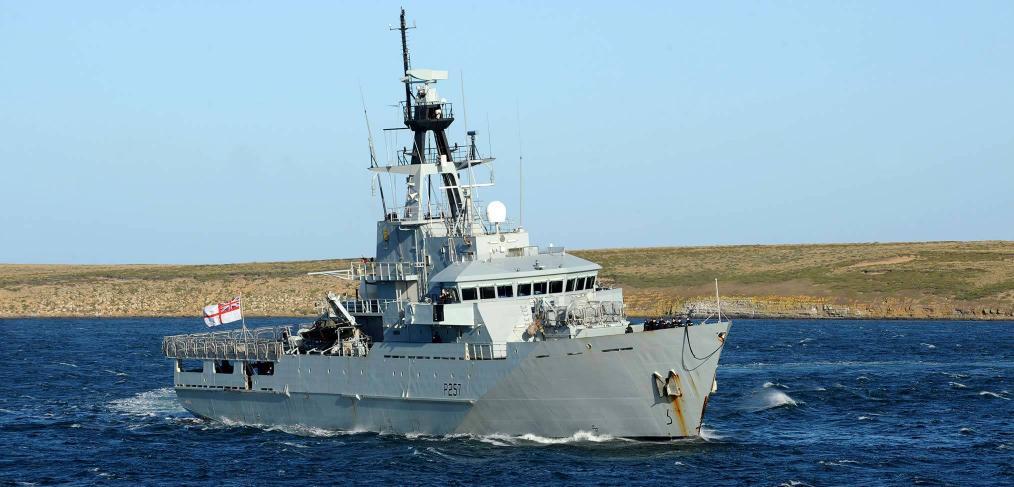
Today HMS Forth (P222), sailed from Portsmouth for the South Atlantic to be permanently deployed as the newest Falkland Islands Patrol Vessel (FIPV). In this guest article, Chris Sutton who served on some of the FIPVs provides a history of the RN vessels assigned to this role.After the cessation of hostilities between the U.K. and Argentina in 1982, the Royal Navy committed a relatively large number of escorts and auxiliaries to the continued protection of the Falkland Islands whilst RAF Mount Pleasant was under construction. At the time, the RN escort fleet, whilst far more numerous than today, was stretched to maintain prolonged South Atlantic operations and the constant deployments were taking a heavy toll on the ships of the fleet. It became increasingly obvious that the economy of the Islands also needed to be protected and policed and to this end, three North Sea oil rig support ships were purchased outright from Seaforth Maritime.
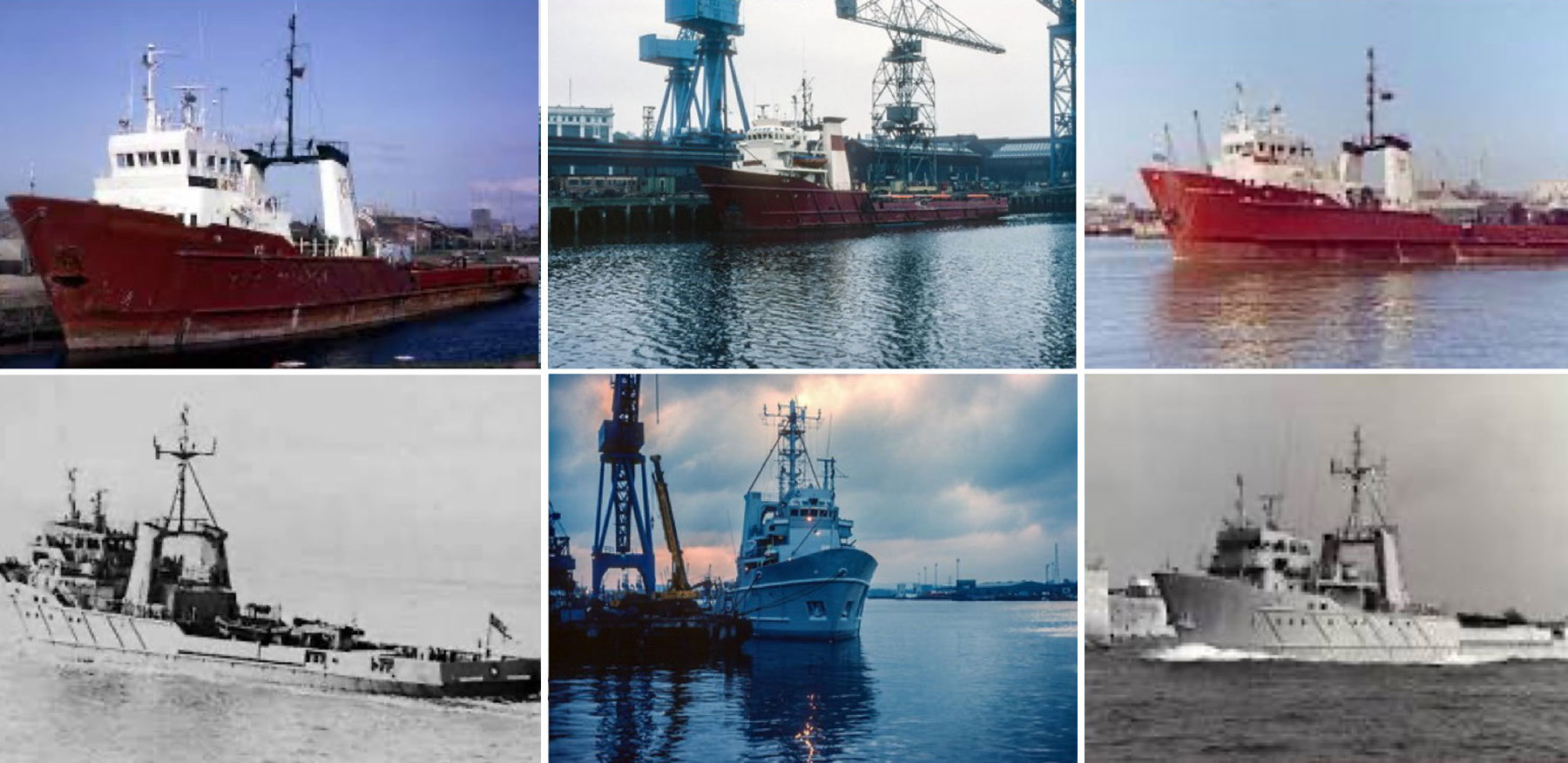
The conversion mainly entailed a new communication fit, some internal accommodation changes, fitting 2 x Bofors 40/60mm guns and painting the vessels grey. However, once on station, the inadequacies of these three half-sisters began to become apparent, especially with an already overstretched logistics chain. Their non-standard equipment was difficult to maintain, unreliable and spare parts were hard to come by. It also became very apparent that the South Atlantic is far less forgiving than the North Sea and their sea keeping was atrocious. However, they still managed to do sterling work carrying an RM detachment that would be landed in the relatively sparsely populated West Falkland to carry out patrols and maintaining an RN presence around the islands.
Upon their return to the UK, they were refitted for various roles including Northern Ireland patrols, attachment to BRNC and equipped with a SUBMISS recompression chamber. Guardian also had a claim to fame, featuring in the classic movie North Sea Hijack! They were sold back into civilian hands in 1993.
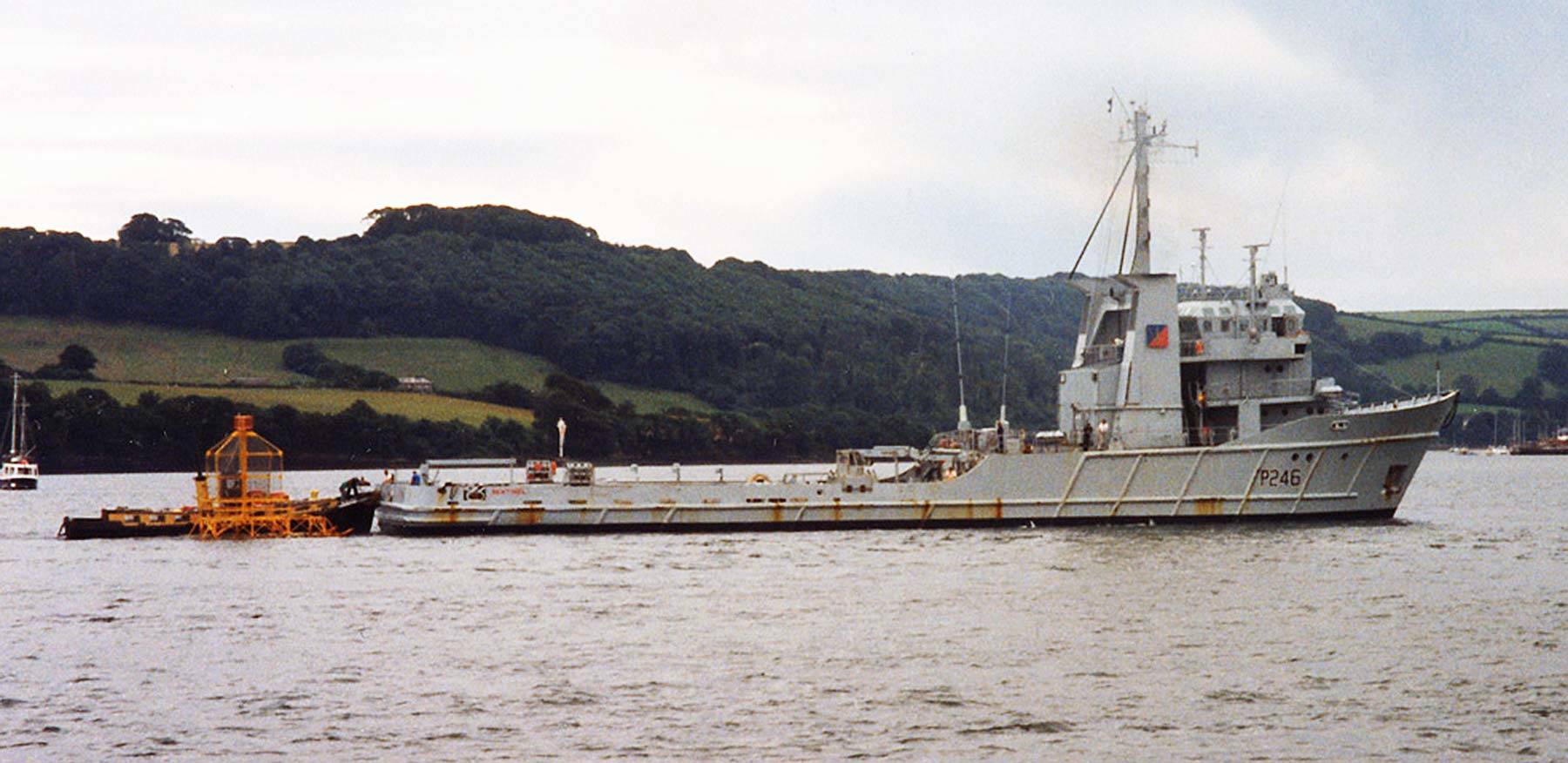
By the early 1990s RAF Mount Pleasant was fully operational and the RN commitment was scaled back. One of the Castle class OPVs was permanently assigned to the role and supplemented by either a single destroyer or frigate supported by a Rover class RFA tanker, RFA Diligence and an occasional submarine.
The Castle Class were ideally suited to South Atlantic operations and had excellent sea keeping qualities, long-range, a relatively good and sustainable speed, the ability to transport and land up to 120 troops and importantly a large flight deck capable of operating up to Sea King size aircraft. Even a Chinook could be landed athwart ships, but this took a very brave and skilful RAF crew indeed!
HMS Leeds Castle and Dumbarton Castle alternated, each completed 3-year deployments with constant trickle drafting for the ship’s company. An air search radar was added, but otherwise they were unchanged from their original design. During their time on station, they would provide ‘up threat’ radar picket duties, resupply the South Georgia garrison, visit outlying settlements as well as their primary role of Fishery Protection. The economy of the Falkland is heavily dependent on fishing and without enforcement, many large foreign factory ships operated illegally, decimating the ocean stocks. On several occasions in the dead of night, the ship would be lit as a fishing vessel and sail amongst them, unnoticed. If a vessel was suspected of acting illegally, the lights would be changed and it would be boarded before they had a chance to dispose of any evidence.
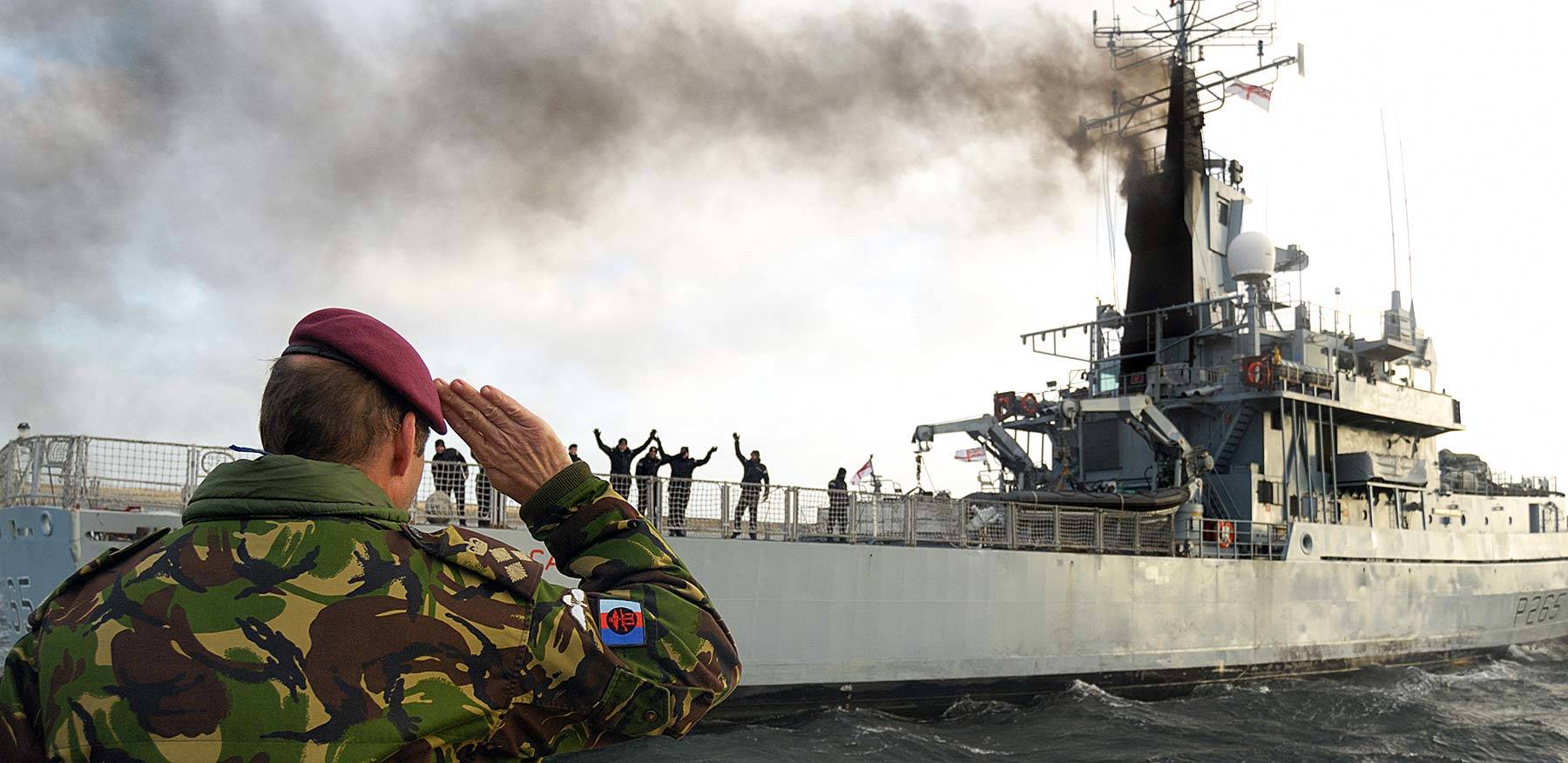
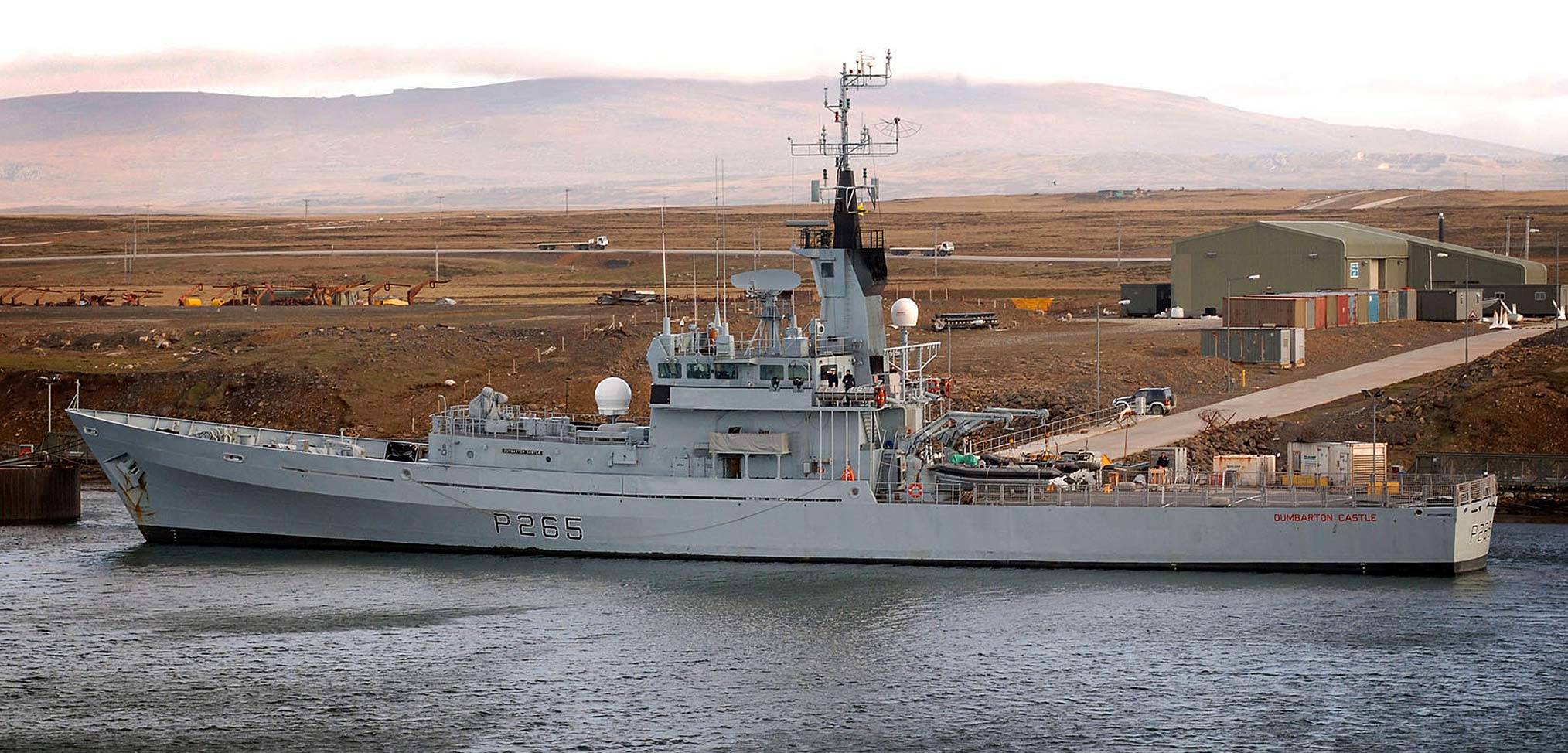
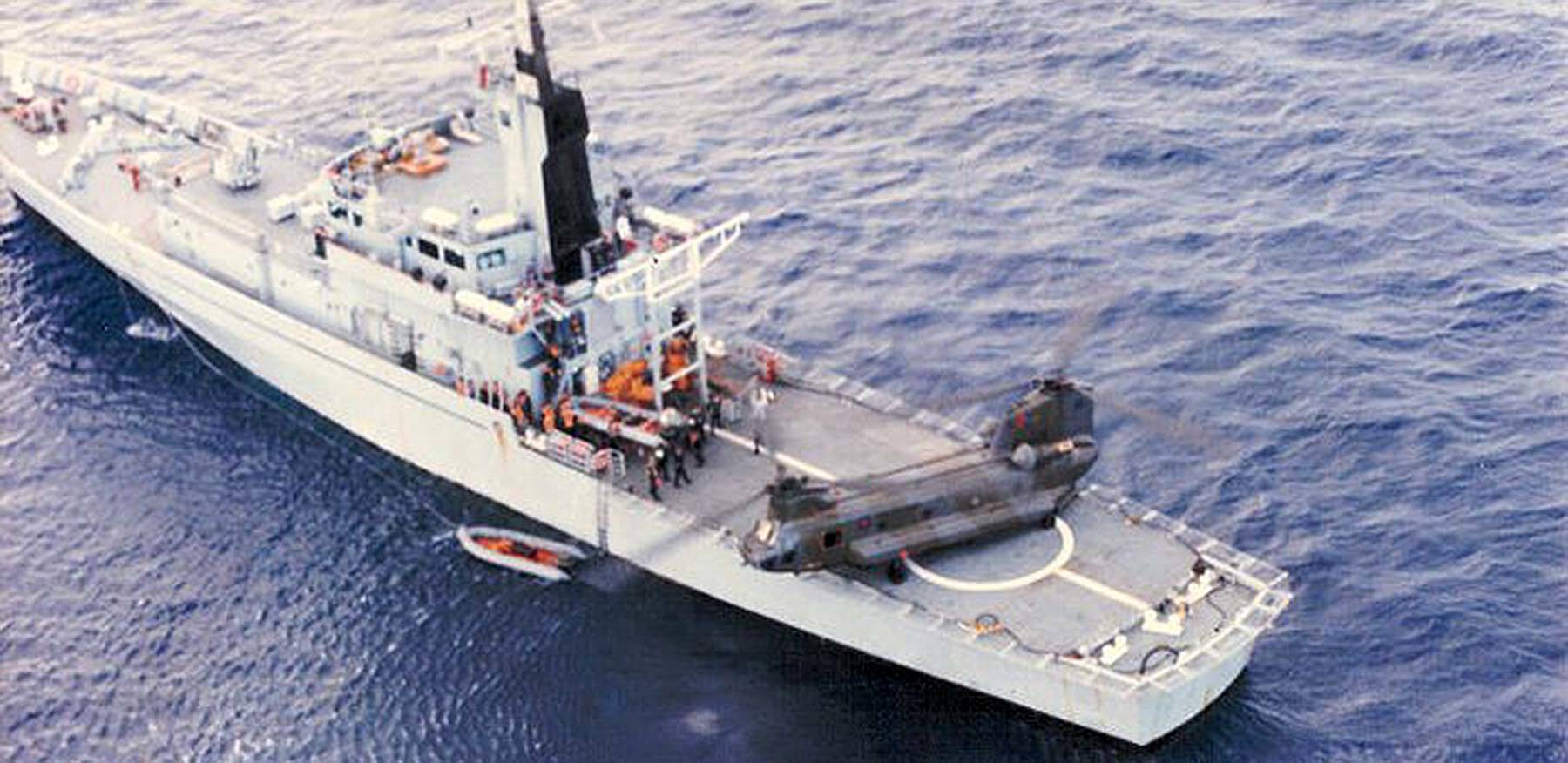
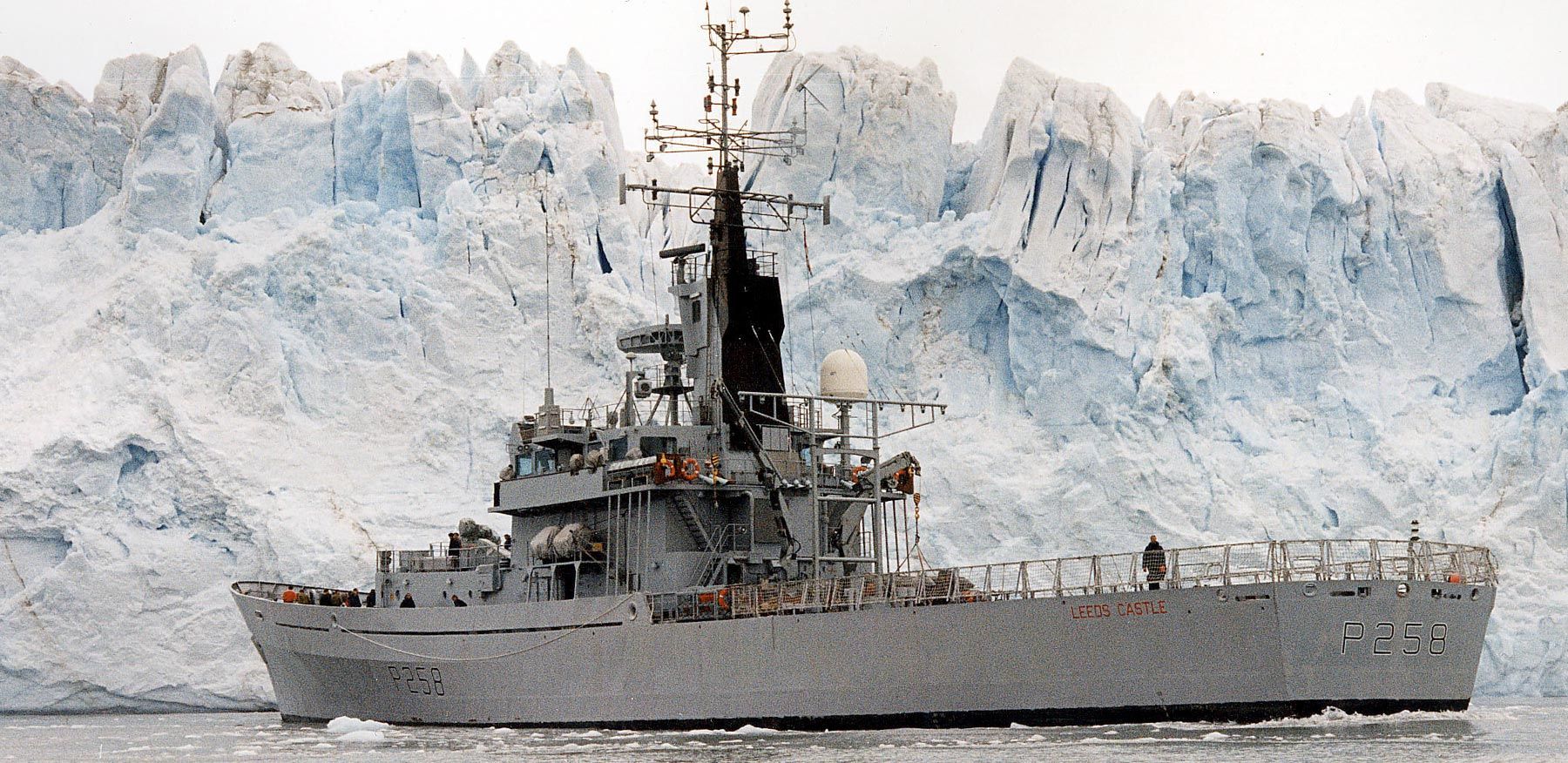
‘Jointness’ between the RN, RAF and the Army are required in the Falklands and each service is very reliant on the others. This made for a great camaraderie between services, much banter of course, but above all (in my case) a much greater understanding of what everybody else actually does. Leeds Castle was the only ship that I served on were I was not only the Jack Dusty, I was also the caterer, a Sea Rider cox’n, part of the foc’sle party, did engine room checks and dips and had to liaise with the RAF, Army, RFA, civilian contractors ashore… it was a baptism of fire (after previously serving in a carrier) but probably the most educational time that I had.By the early 2000’s, the Castle Class had been worked hard and were coming towards the end of their RN life (although both are still in service with the navy of Bangladesh and have been heavily up-gunned). A single vessel, HMS Clyde, was built by Vosper Thornycroft to a design based on the already existing River Class OPV’s, albeit ‘stretched’ to include the all-important flight deck.
Clyde was designed at the outset to be continually deployed to the South Atlantic and the way that she is operated is unique within the RN. She is not owned by the RN, but is leased from VT (now BAE Systems) who retain responsibility for the vast majority of the maintenance of the vessel. She has now been continuously deployed for some 12 years and has retained an enviable number of days per year availability. This is testament to her original design of ease of maintenance, BAES staff, RN ships company and increased capabilities of Mare Harbour.
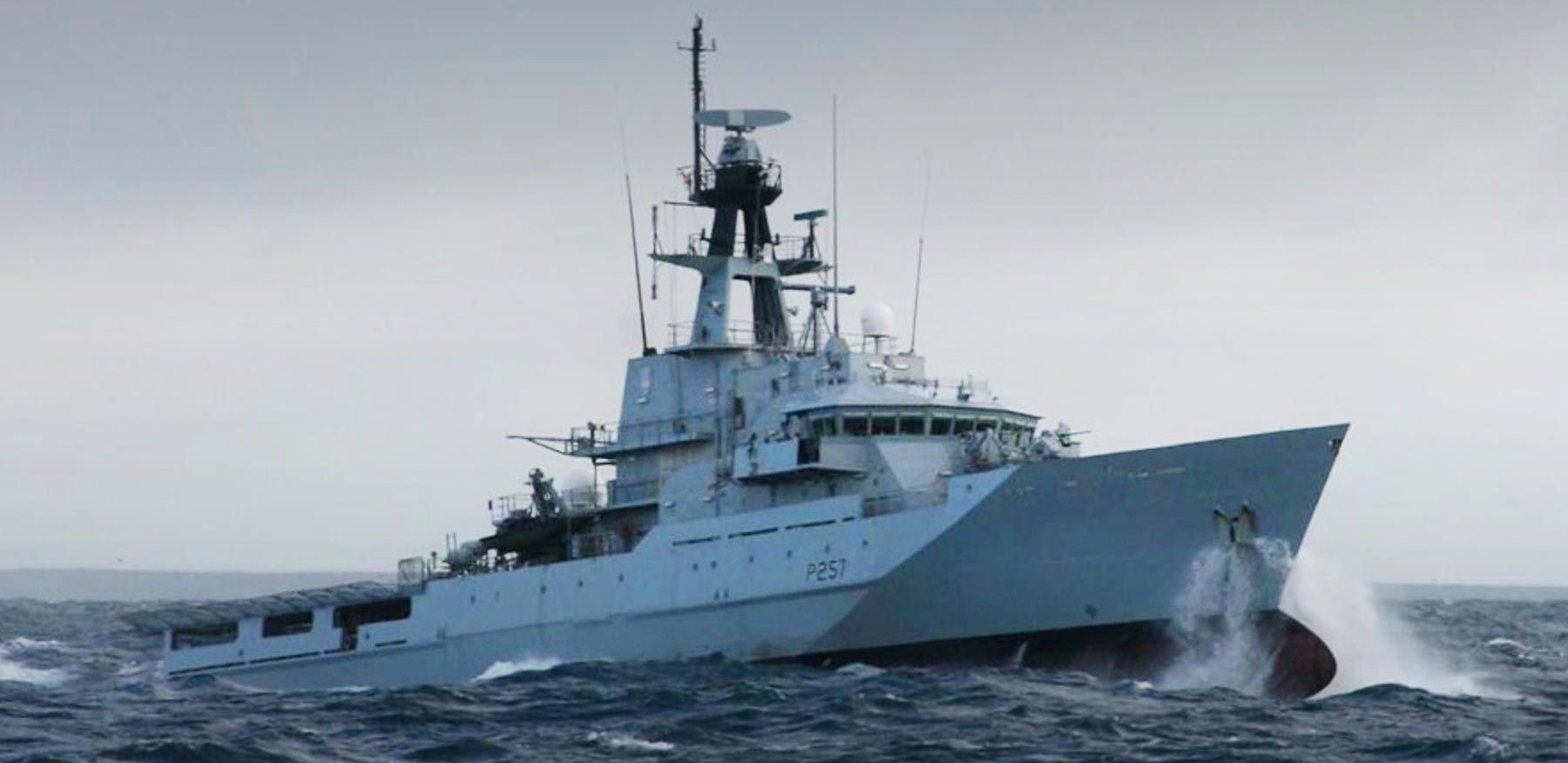
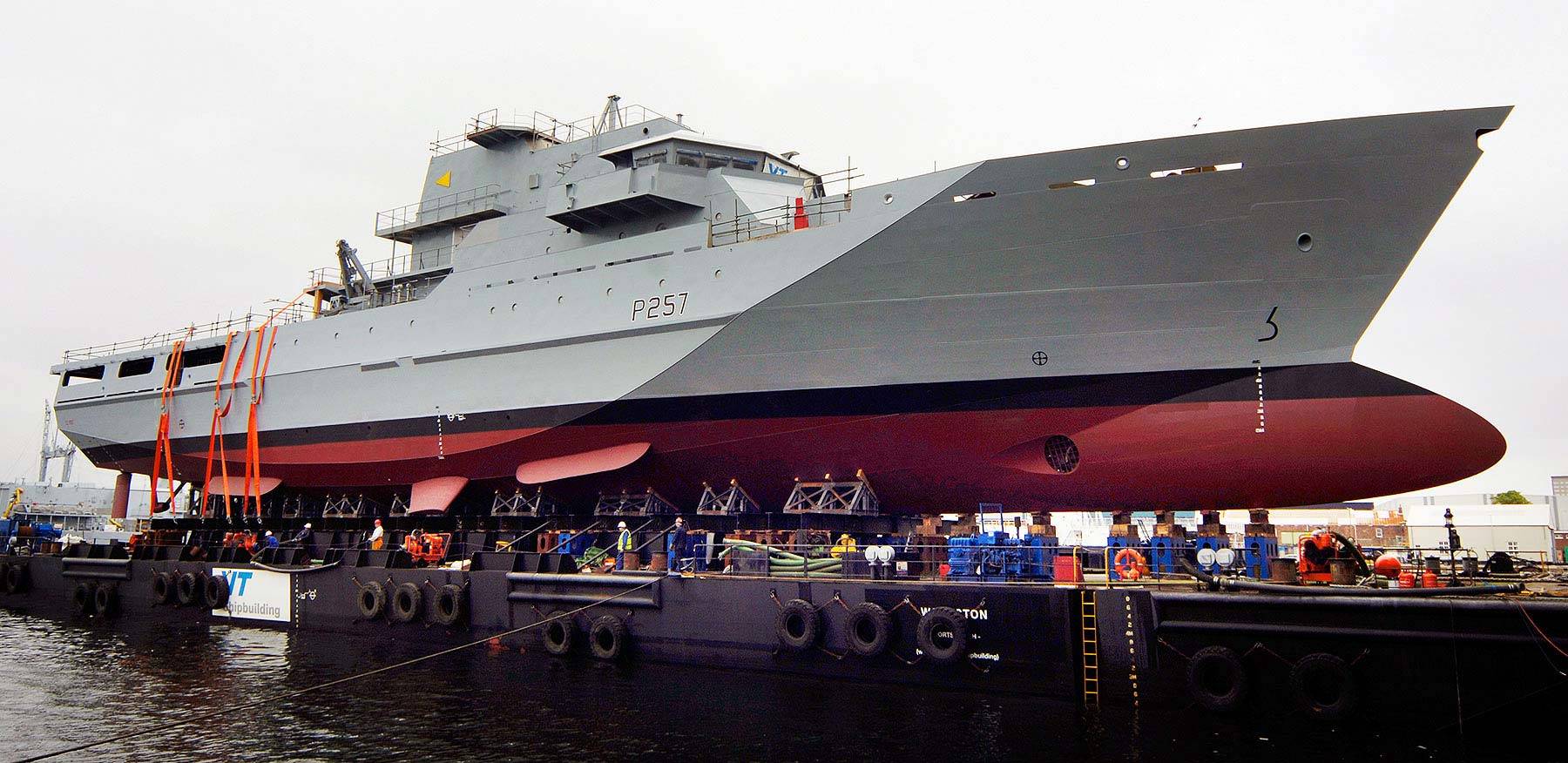
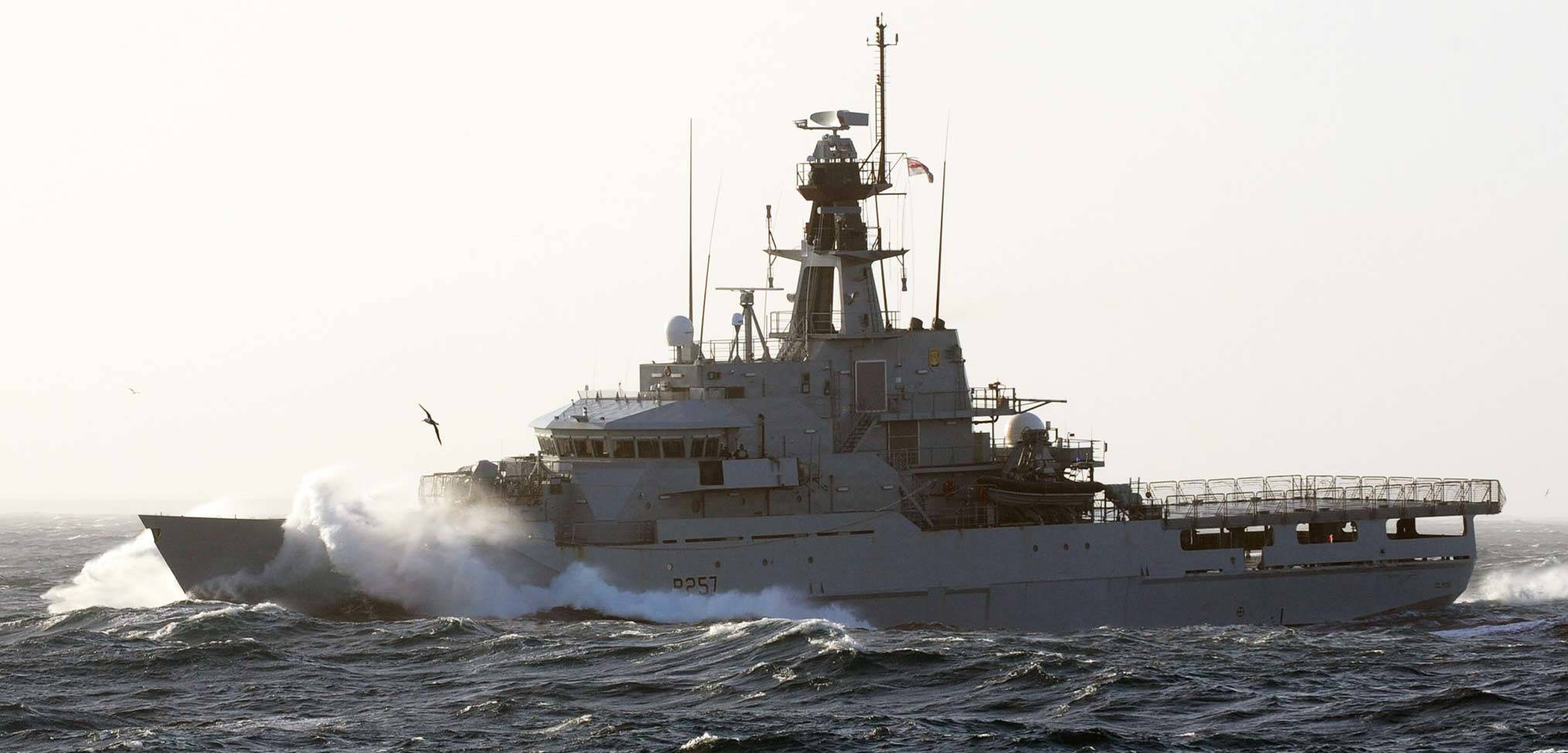
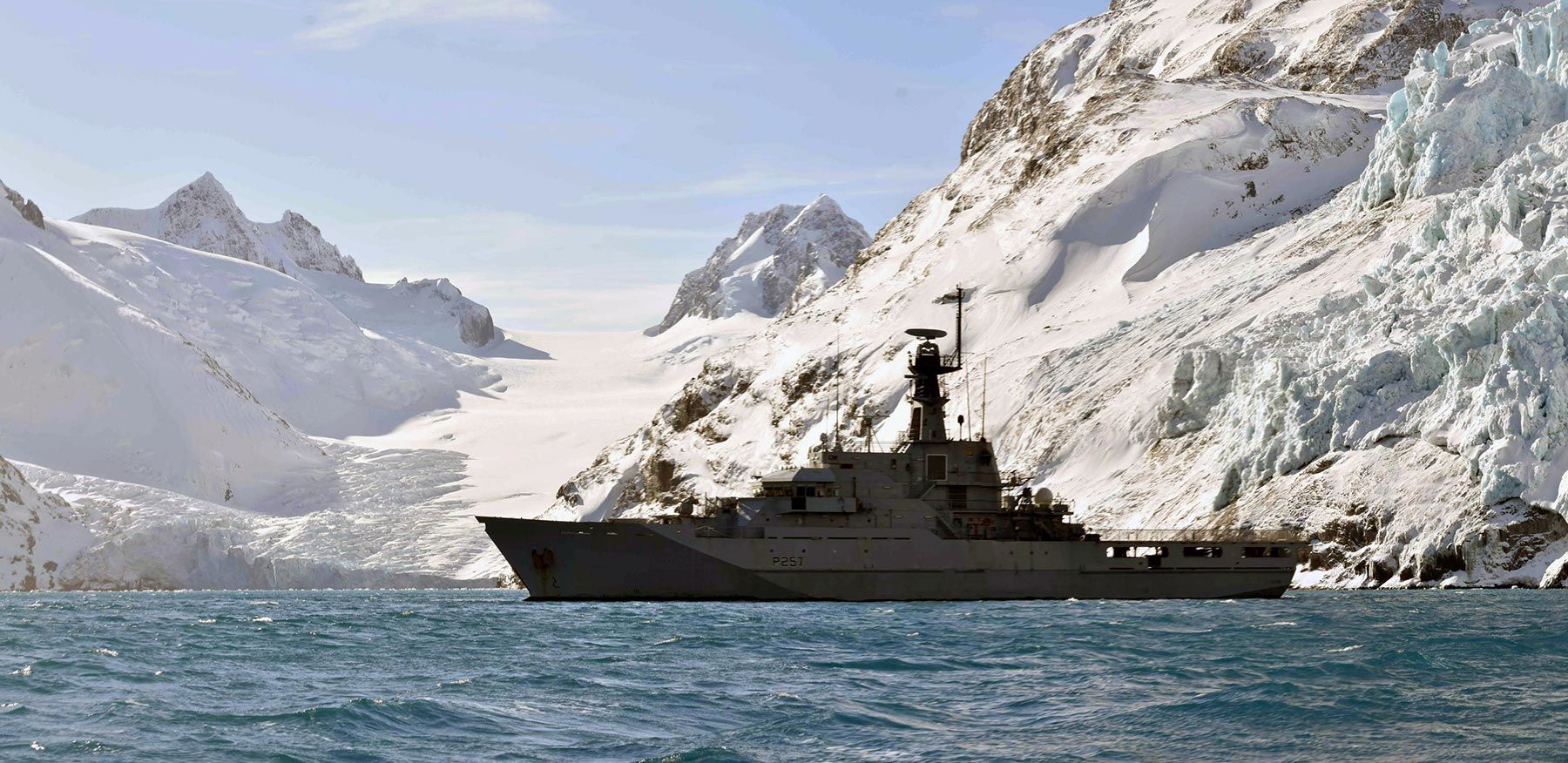
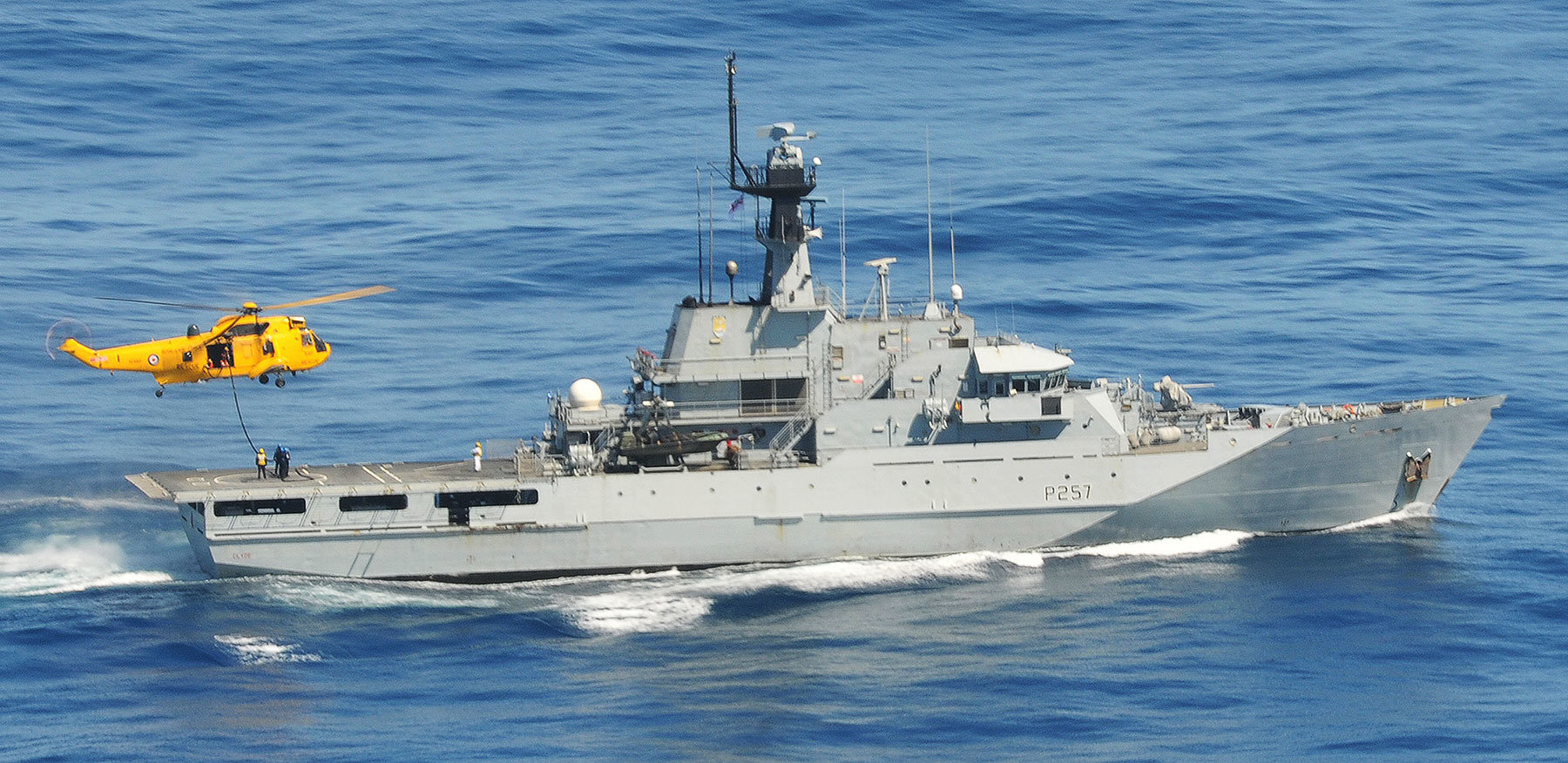
During her time down South, HMS Clyde has not only carried out similar duties as her predecessors, but also assisted with the rescue of 347 passengers and crew from the stricken cruise ship Le Boreal in 2015 and more recently, together with HMS Protector, assisted in the search for the sadly lost Argentinian submarine ARA San Juan in 2017.
For most of her career, Clyde has been the only full-time RN presence in the Falklands and the islanders themselves (who are some of the finest people that I’ve had the good fortune to meet) have taken the ship into their hearts as her silhouette has been a constant and visible reminder of the UK’s commitment to those far away islands.
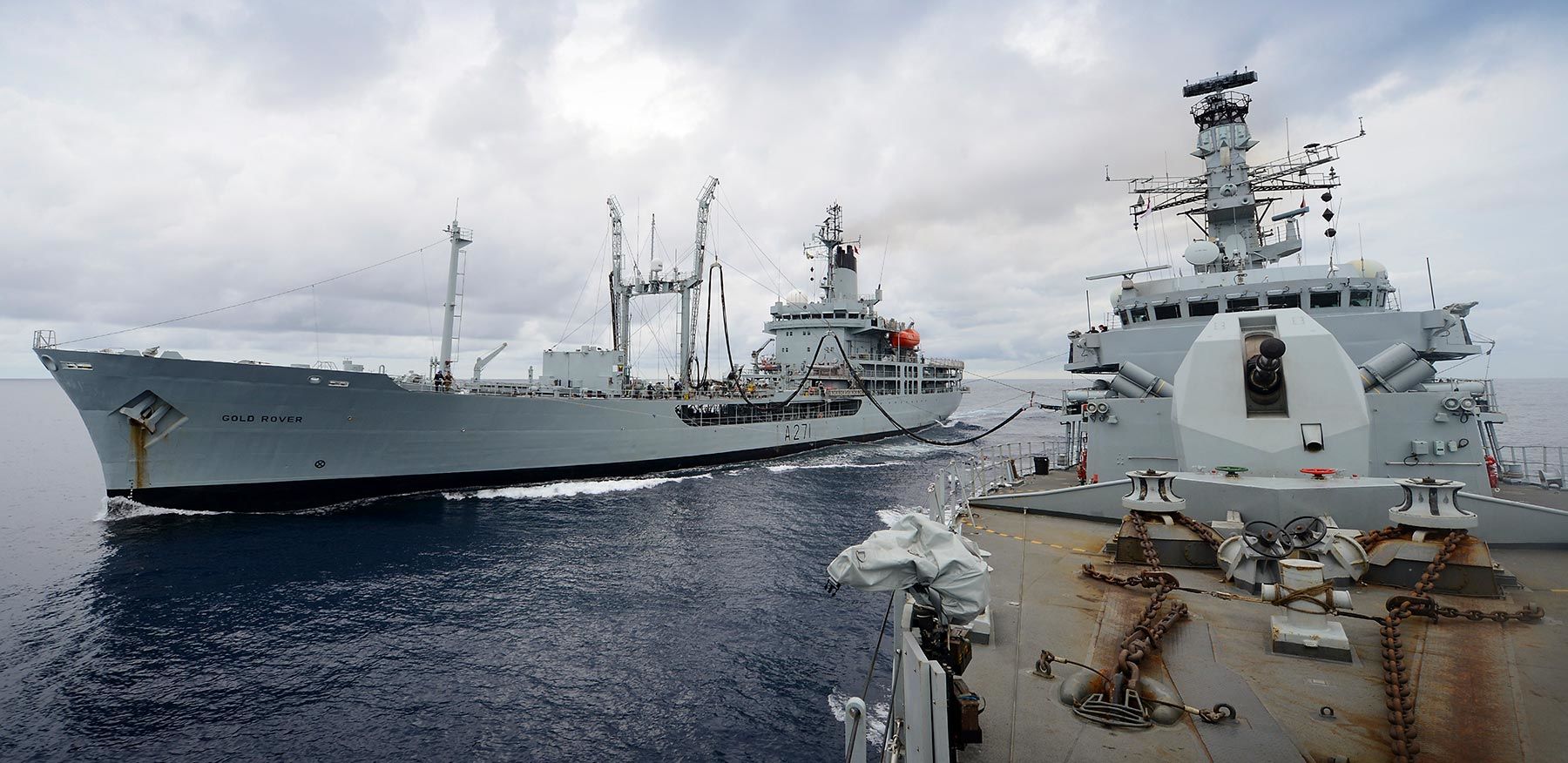
Clyde lease was originally due to end in December 2018 and she would be handed back to her owners and replaced by the first of the Batch 2 River Class OPV’s, HMS Forth. However, Forth was found to have many issues that have taken a further year to rectify. (See previous articles) Clyde is due to pay off in December 2019 and it has been reported that she is to be sold to Brazil. It is unclear if Clyde will return to the UK or will sail directly to Brazil. Clyde will be replaced by the end of 2019 by the first of the new Batch II River Class OPVs, HMS Forth.
In my opinion, “batch II” somewhat of a misnomer as the five ships of the class are of an almost completely new design. Their BAE Systems CMS system gives them a major advantage over Batch 1 vessels and has considerable potential for additional future capabilities. Whilst still relatively lightly armed, they are more than capable for their intended roles. HMS Forth will be a valuable asset to the defence, security and economic wellbeing of the Falkland Islands and is certain to be welcome when she visits the outlying settlements, as well as by the RAF and Army.

Comments on A history – the Royal Navy’s Falkland Islands patrol vessels